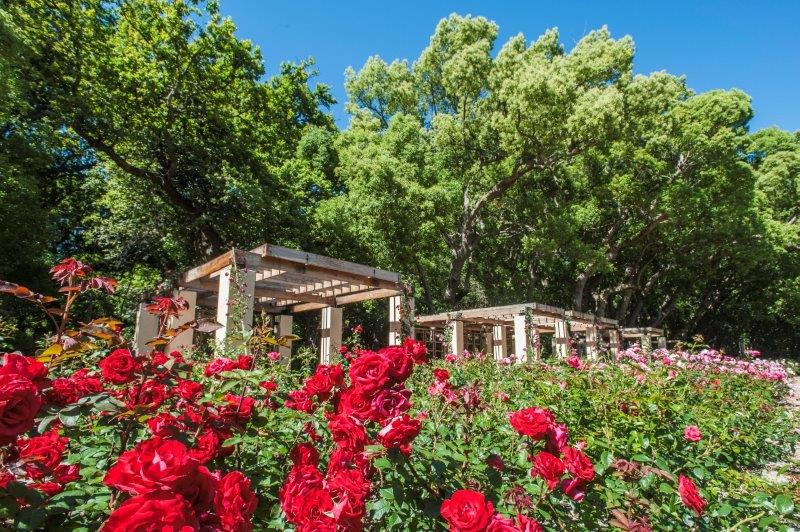
16 Heritage Reasons to Visit One of South Africa’s Oldest Wine Estates
September is not only the month when we celebrate South Africa’s heritage, it also includes Arbor Week, when South Africans appreciate our trees and nature. Here are 16 reasons why exploring the exquisite gardens of 317-year-old Vergelegen Estate in Somerset West is the fun, relaxing way for the whole family to find out more about […]

September is not only the month when we celebrate South Africa’s heritage, it also includes Arbor Week, when South Africans appreciate our trees and nature.

Here are 16 reasons why exploring the exquisite gardens of 317-year-old Vergelegen Estate in Somerset West is the fun, relaxing way for the whole family to find out more about South Africa’s multi-faceted history.
The estate, founded in 1700, is regarded as one of South Africa’s top three heritage sites and has won the international Best of Wine Tourism award no less than five times. It welcomes 100 000 visitors every year, half South African, and the remainder mainly from England, Germany and Holland.

1. View the Big Five
Marvel at five enormous camphor trees (Cinnamomum Camphora) planted in front of the gracious homestead by former Cape governor and Vergelegen owner Willem Adriaan van der Stel. They were proclaimed national monuments in 1942 and should live for another 150-200 years.

2. Check out an oak:
A hollow old English oak, about 300 years old, is believed to be the oldest living oak in Africa. The estate also launched an oak arboretum in 2012, planted with about 15 oak varieties. A big carved acorn marks the spot.
3. Get an eyeful:
Enjoy glorious views of the Hottentots Holland Mountains from the East Garden, which has lovely water features and a playground for children.
4. Explore the herb garden:
Located outside the wine-tasting centre, the herb garden is divided into four sections representing the estate’s layered historicism. Admire the last of the winter-blooming aloes in the South African section.

5. Find books for Africa:
Track down the two centuries-old wine cellar, now a library housing 4500 books that belonged to former Vergelegen owner, randlord and philanthropist Sir Lionel Phillips. One of the oldest books is Den Nederlandsen Hovenier (1696) with garden plans, a garden almanac and facts on pruning, grafting and tools.
6. Spread the love:
Wooden sculptures mark the location of two young gingko trees donated by the Green Legacy Hiroshima initiative to promote world peace. They are grown from seeds harvested from a 300-year old Japanese gingko tree that survived the Hiroshima atomic bombing in 1945.
7. Ramble along a river:
The Lourens River is the only local river that’s a Protected Natural Environment. Gaze down on its clear waters from the overhead swing bridge, then explore the footpath along its banks.

8. Catch sight of a camellia:
The estate boasts Africa’s first and only International Camellia Garden of Excellence. Near the Lourens River, look out for late-blooming pink, white and red South African varieties (all are clearly marked). The pink ‘Laurian Brown’, named after the noted garden writer, is exquisite.

9. Marvel at a majestic yellowwood:
This giant is estimated to be 150-400 years old. Take a seat on the bench and take time to contemplate.
10. Study the story of slavery:
Mark the location of the old slave lodge near the ruins of an old water mill. Then find out more about many of Vergelegen’s early inhabitants, and slavery in the Cape, at the homestead’s Education Corridor.

11. Walk the royal route:
Britain’s royal family have visited the estate since King George VI and his family paid an informal visit in 1947. Take the ‘queen’s gate’ (used by Queen Elizabeth II) set in the wall surrounding the homestead and view the royal oak, grown from King Alfred’s mediaeval oaks at Blenheim Palace in Oxfordshire.
12. Take the silk road:
Near the homestead you’ll discover a huge, ancient specimen of white mulberry (Morus Alba). It’s a living reminder of Governor Simon van der Stel’s attempt to start a silk industry in the Cape.
13. Discover world-class wines:
Visit the wine tasting centre and sample the estate’s award-winning wines. Take some home to replenish your stocks.

14. Feast on local flavours:
Opt for family favourites at the relaxed Stables bistro restaurant, or sample signature dishes at Camphors. It pays homage to hyper-seasonal local produce – from honey to grass-fed beef.
15. Stroll in the camphor forest:
Explore a lush expanse of sun-dappled camphor trees, seeded from the original giant camphors planted three centuries ago by Willem Adriaan van der Stel.
16. Select a gift:
Compile a proudly South African goodie bag to take home. The gift shop at Stables has delicious nibbles such as fudge, meringues and olive oil. The wine tasting centre offers designer accessories for wine connoisseurs.
To visit Vergelegen: Opening hours Monday–Sunday 09h00-17h00 (last entry 16h00). Entrance R10/adults and R5/pensioners and scholars. Pensioners free on Mondays. Daily heritage and garden tours (one hour) depart from the wine tasting centre daily at 09h30, at R50/person. Telephone 021-847-2122. Find out more on www.vergelegen.co.za | info@vergelegen.co.za.
